On page SEO Tutorial. Complete Tutorial for On page Optimization in SEO
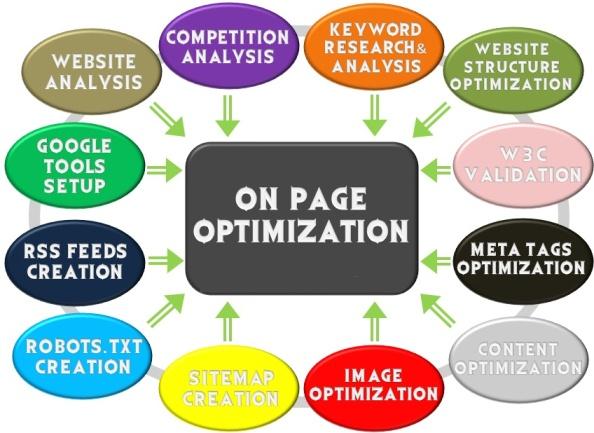 On-page SEO is a complex of works aimed to build resources in accordance with search engines requirements.
On-page SEO is a complex of works aimed to build resources in accordance with search engines requirements.
On Page optimization factors in 2021
- Technical aspects.
- Reliable web hosting.
- HTTP headers and status codes (3xx, 4xx and 5xx).
- Correct 301 redirects.
- Canonical address (rel = canonical).
- Site structure.
- Document size.
- JS and CSS in external files.
- Cloaking.
- Region setting.
- Indexation.
- Meta tag robots
- robots.txt
- sitemap.xml
- Correct links to sitemap.
- Text navigation.
- Using iframe, JS, Flash.
- Domain basic version (“www” or not “www”).
- URL.
- Short URL.
- Hyphens instead of underscoring signs.
- Keywords in the URL.
- Parameters duplication in URL.
- Static and dynamic addresses.
- Sub-folders instead of sub-domains.
- Web analytics.
- Installation of system analytics.
- Adjusting system analytics targets.
- Small bounce.
- Relinking (internal links).
- Presence of navigation.
- Reference blocks.
- Absence of “nofollow” and broken links.
- Absolute links instead of relative ones.
- Content
- Positive factors: quality, relevance and up to date content, TITLE and META description, heading tags H1-H6, Text-headers instead of image-headers, detailed description on the goods cards, frequent updating of dynamic sections, ALT attributes for images, Google authorship.
- Negative factors: duplicated, aggregated or informative content, excessive keyword-optimization, invisible or hidden text, keywords cannibalization, links to unauthoritative sites, links selling.
- Usability.
- Download speed.
- Content and ads ration on the first page screen.
- Absence of pop-up ads.
- Detailed contact page.
- Single price page.
- Delivery and guarantees page.
- Support availability.
- Presence of online-assistant.
- Infinite scrolling.
- Mobile-adaptive site.
- Integration with social networks.
- Possibility of reviews and comments.
Preliminary works
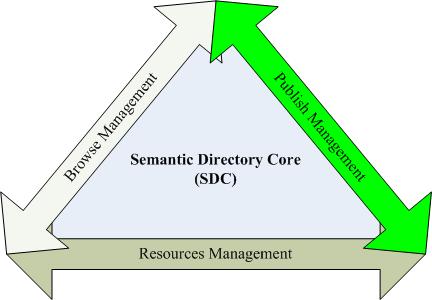 Before starting on-page SEO, choose keywords and create a semantic core (list of keywords that are distributed on site, according to which promotion is carried out).
Semantic core can be of different sizes, from small lists of keywords, for example, 10–100, to 100 000 and more. To compose a semantic core, competent keywords selection must be made, as well as keywords distributing on the site (for each site page or section 5-25 keywords is optimal).
Before starting on-page SEO, choose keywords and create a semantic core (list of keywords that are distributed on site, according to which promotion is carried out).
Semantic core can be of different sizes, from small lists of keywords, for example, 10–100, to 100 000 and more. To compose a semantic core, competent keywords selection must be made, as well as keywords distributing on the site (for each site page or section 5-25 keywords is optimal).
Creation of semantic core
Creating semantic core is one of the steps in On Page SEO tutorial. In order to create Semantic Core it is necessary to determine promotion directions (e.g., will it be e-commerce promo or just info site). Then you should choose keywords under for direction. If the site is large, the collection of keywords can be time consuming. Moreover, you’ll need fee-based databases to make semantic core faster and more efficiently. If the site is informative, it is better to create initially a permanent core of keywords, which will enter the site constantly, and after that to collect the words that are trendy or seasonal. Semantic core is an integral part of SEO. There are 3 main stages of semantic core creation:- Determination of main directions.
- Choosing keywords.
- Keywords distribution.
How to make On Page SEO properly: the main points
- META tags
- Title. It’s a main META tag on which Google pays attention and takes
 into account as a ranking factor. This tag is one of the most important part onpage SEO guide. Title length is generally accepted to be within 70 characters, but it can be done even longer that 125 characters. The main feature is that title shouldn’t be spammed by keywords.
into account as a ranking factor. This tag is one of the most important part onpage SEO guide. Title length is generally accepted to be within 70 characters, but it can be done even longer that 125 characters. The main feature is that title shouldn’t be spammed by keywords. - Description. It’s needed for CTR (number of visits) increase, but you can implement main keywords there as well (it can hardly affect the rankings).
- Keywords. It’s not necessary to register, as it’s has very small probability to affects ranking.
- Title. It’s a main META tag on which Google pays attention and takes
- ALT. It’s a tag, intended for pictures prescription and means an alternative text. When optimizing site, it’s desirable to prescribe ALT for the main pictures, and if it’s possible, for all the pictures (as pictures also have conversions, as Google has “picture search” tool). You need to prescribe “title” in the page as well.
- H1(proper use is 1 time on a page). Usually the page, showing search engines that info must be registered, marks as “H1”.
- Bold/strong. You may bold main keyword 1-2 times (if more, it would look spam).
- Text. Firstly, text on the site must be addressed to users, and secondly, it must be SEO.
- Structure. It’s extremely important in site promotion.
- Page (nesting) level. The first thing you have to do is to make pages level nesting at 4 or less level. It’s quite simple for sites with small amount of pages. But if we consider large online stores or media sites with hundreds of thousands of pages, then you should definitely: 1) create a site map (or several site maps) 2) implement special pages for far-nesting-level pages indexing.
- Duplicate content. This is a fairly common error that adversely affects the promotion. If you look at Google Panda, you can find that it strongly penalizes sites for duplicate content. Double page means two pages with the same content. What you have to do in this case is to remove duplicate content, close these pages from being indexed and use “rel canonical” tag.
- Internal links. It is important site promotion and widely used by optimizers if site has multiple pages. This is often large content projects and online stores, with a large number of queries. The most important thing is proper distribution of keywords weight. Internal linking could be done between blocks or in articles. There are special relinking scripts and on page tools that can handle the job of distribution keywords weight on a site. For example, on Wikipedia all the pages correctly relink each other and transmit weight. Linking could be done manually (if you don’t have many articles) or automatically.
- Social Factors. SF affected SEO more and more, so it is necessary to place social network buttons properly. Site promotion is affected by “likes” (facebook), tweets (twitter) and +1 (Google plus). It’s important that “likes” and tweets must come on domain name, but not on a social network page (only in this case weight, which affects rankings, will be transferred).
- Usability. Design and site usability are also influence page views, conversion, purchase orders and sales. The more comfortable site, the better its structure and perception – the better its chances to be promoted, as these factors give more feedback from the involved traffic to the site. You should work on your website permanently. Comfort using a site is based on constant work and testing alternatives, which results in maximum conversion rate (for commercial sites).
- Code. It must be optimized to allow site working fast and not slowing download speed. As upload speed affects the ranking, if the site is loaded slowly, search engines may downgrade its positions. Sometimes there are a lot of unnecessary extra features in management system, both in terms of engine operation and search engine optimization.
- Search engine tools. Add a site in Google Webmaster Tools to identify bugs and eliminate them.
Site adaptation for mobile phones
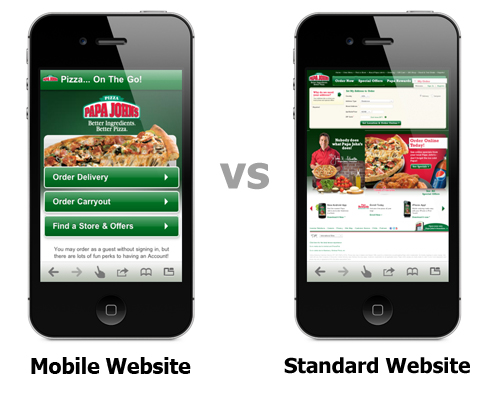 In recent years, internet users are increasingly moving to mobile devices. Mobile data traffic continuously grows. Now, in the SEO promotion it is necessary to take into account the involvement of mobile traffic. At the moment very few sites are adapted for mobile devices, and you have an opportunity to get additional traffic with minimal efforts. The last Google SEO trend is to give priority to sites adapted for mobile devices, as well as sending “thank you” letters with information about removing none-adapted sites from mobile search.
If you’ve tracked the trend over the last year you obviously find out that comfortable and quick websites are prevailed in the search results. Mobile adaption is also an indication of site growing and developing the support of new technologies.
In recent years, internet users are increasingly moving to mobile devices. Mobile data traffic continuously grows. Now, in the SEO promotion it is necessary to take into account the involvement of mobile traffic. At the moment very few sites are adapted for mobile devices, and you have an opportunity to get additional traffic with minimal efforts. The last Google SEO trend is to give priority to sites adapted for mobile devices, as well as sending “thank you” letters with information about removing none-adapted sites from mobile search.
If you’ve tracked the trend over the last year you obviously find out that comfortable and quick websites are prevailed in the search results. Mobile adaption is also an indication of site growing and developing the support of new technologies.
Simple steps to adapt your website for mobile devices
- Content could be read easily without zooming.
- Site had to have a mobile navigation menu.
- Adapt the viewing area to support the maximum number of devices. This can be done using the “viewport” tag.
- Use readable fonts and text sizes.
- If elements sizes are too small, they will be hard to be pressed on the mobile device. Increase active elements size.
To enhance loading speed on mobile phones you need:
- To combine and compress JS and CSS codes.
- To transfer JS and CSS down the code (if it’s not possible – to run the JS in the form of asynchronous code).
- To define the term to all static site elements to make them cache and reduce load on your server.
- To compress images without quality lose.
- Do not use JS and 301 redirects, if it’s possible.
- Reduce server response time by increasing its power.
On-page SEO Audit: common technical task
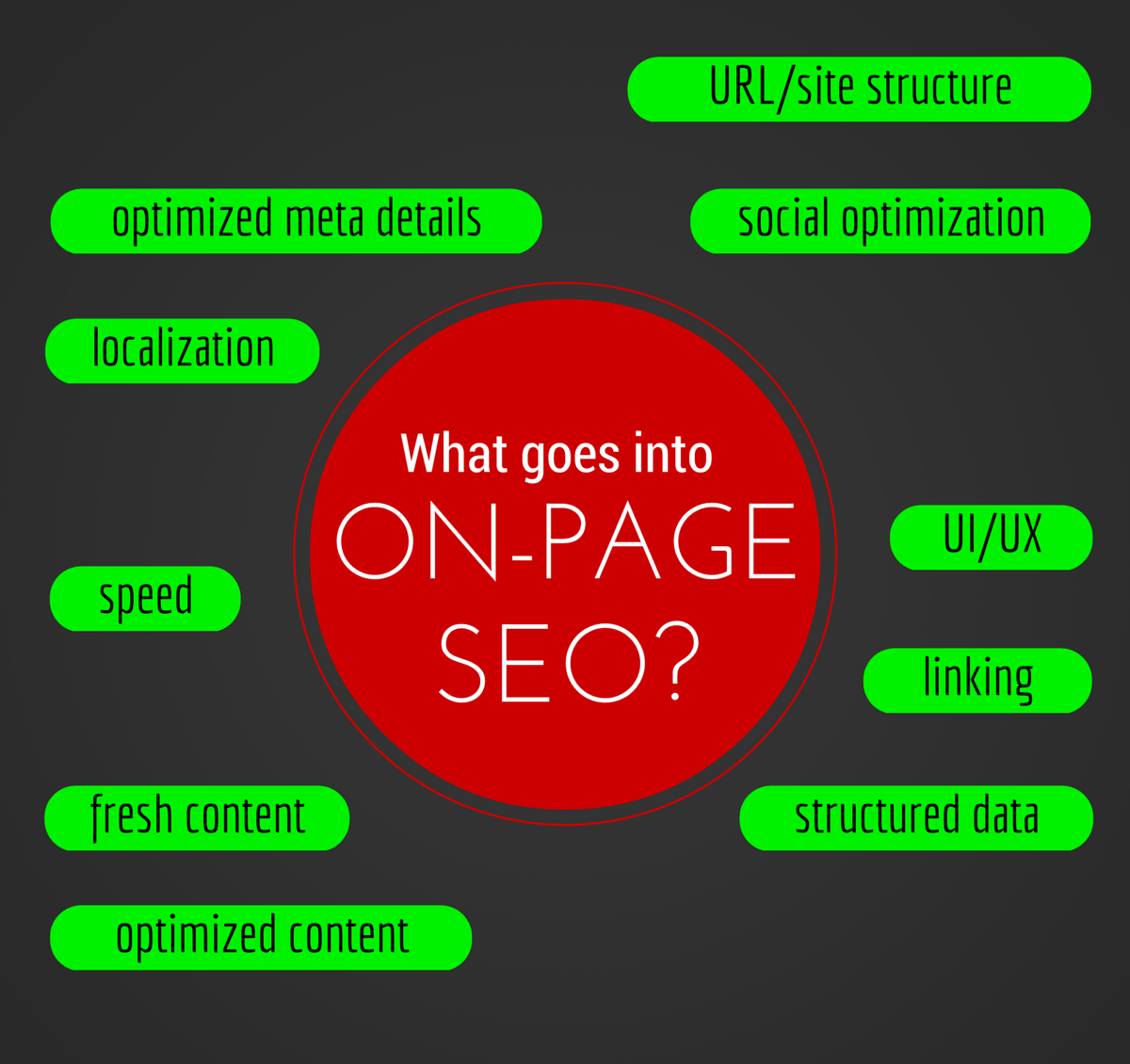 We strongly recommend you to make a checklist not to miss any moments associated with the internal optimization in order to take TOP positions in 2018. It serves as a list of tasks, as well as for its verification. Let’s have a detailed look on the each point.
We strongly recommend you to make a checklist not to miss any moments associated with the internal optimization in order to take TOP positions in 2018. It serves as a list of tasks, as well as for its verification. Let’s have a detailed look on the each point.
- Client e-mail registration. It is needed to attach statistics services and some other tools. After optimizer creates accounts, he gives his client all the passwords, so the client can control and watch whatever got registered. Usually it contains site statistics counters, Google webmaster, social networks accounts, and so on. Webmaster’s tools are added after Google account got registered.
- Adding site to webmaster (Google webmaster tools). You should pay attention to duplicated pages, errors, sitemap creation, choosing main site mirror, assigning region, creation of robots.txt.
- Making URL. It must be short and contain keyword (not required, but possible).
- Prescribing META tags and tags. The main META tags and tags: “Title”, “Description”, “Keywords”, “H1”, “ALT + picture title”, “Rel «canonical»” (if there are duplicates).
- Checking texts uniqueness and its optimizing. If you are faced with frequent necessity of text editing and rewriting, you should make technical task and choose copywriters more carefully, as well as carefully control text implementation.
- Using micro data. Use advanced snippets for different Google tasks, as it attracts more attention and ultimately gives more transitions than snippets.
- Addition of Google Places. It may also give extra visitors the same way as correctly registered and optimized page.
- Checking of the site speed. Download speed is very important as it affects website ranking, so you should definitely check out download speed, determine what scripts or files load site, check hosting operation (make some necessary changes or change hosting at all).
- Adding statistics counters. In order to track site traffic, you need to install Google Analytics or some other counter. Almost in all cases you need to set up targets (for example, tracking orders and conversions). As the result you will determine how much traffic is brought by each source.
- Adding social buttons. As social factors are important for SEO promotion, you should implement social buttons on the first screen page in prominent place.
- Internal linking. Internal linking is always done on the basis of weight distribution on the site and pages indexing.
Common mistakes while on page optimization
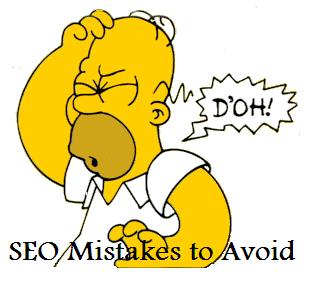 In some cases, the internal optimization can be carried out with errors which cause incorrect indexing and prevent a promotion. The most common include:
In some cases, the internal optimization can be carried out with errors which cause incorrect indexing and prevent a promotion. The most common include:
- Navigation using scripts. To link to another site page <a> is used, which is correct according to SEO rules. But sometimes Flash, JavaScript or other technologies are used for this purpose. Search robots do not pass through suck links, so if you want to get internal website optimization effect, you shouldn’t use it. In case it cannot be avoid, duplicate such references using <а>.
- Multiple redirects. Multiple redirects can be used only when it is really necessary.
- Duplicated pages. Each site page should be available in only one physical address, and if it is not so, it’s necessary to remove the page or close it from indexing in robots.txt.
- Cloaking (“black” methods of promotion, which leads to different page view of search engines and visitors). Using cloaking you can never get desired effect. Cloaking is fought by every single search engine.
- Blank pages. For successful promotion it is not recommended to do a lot of blank pages, or pages with a small amount of data (less than 500 characters or 1 image).
- 404 error. If page does not exist or removed, you should connect 404 error page to it. It is important to check that server answer is HTTP / 1.1 404. Otherwise, such page may be filtered by search engines.
Most often edits of internal optimization
- Identification of entry points for search phrases.
- Creation of additional pages.
- META tags editing (title, keywords, description).
- Writing of snippets.
- Writing texts for key phrases.
- Internal linking.
- External links indexation prohibition.
- Generation and editing sitemap.xml and robots.txt files.
- Installation of counters.
- Domain change.
- Management system (CMS) change.
Selection of optimizer for website promotion
 Before choosing optimizer it makes sense to familiarize with some of the recommendations of company which offers its services and with SEO basics to make link building correctly. The best way to determine the level of on-page optimizer is to ask him about what he knows and what he can do. But often you have to communicate remotely, so there are some indications, which allow you to make the right choice:
Before choosing optimizer it makes sense to familiarize with some of the recommendations of company which offers its services and with SEO basics to make link building correctly. The best way to determine the level of on-page optimizer is to ask him about what he knows and what he can do. But often you have to communicate remotely, so there are some indications, which allow you to make the right choice:
- Check optimizer’s site traffic. Low attendance suggests that freelancer (or company) can’t promote even his own website. Lack of attendance counters often means that there is something to hide, so it makes sense to think about …
- Portfolio. The main optimizer’s possibilities and abilities assessment is determined by his portfolio. It must contain examples of sites promotion using midrange or high-frequency queries. If, instead of bringing the portfolio, the conversation is moving to another topic (specialist begins to talk about his experience, quality and quantity of work performed) – better end it.
- Ask about the steps, methods and timing of site promotion. Optimizer must inform you about methods and steps of promoting: this information is not secret, and avoiding a response often means that improper methods of promotion are going to be used.
The connection between links and on-page optimization
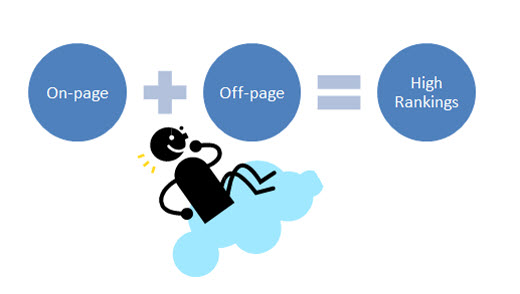 Many people using SEO promotion, after some unsuccessful results begin to be tormented by doubts that they’re doing something wrong. Sometimes there is no result, though a lot of time has been passed. The main mistake is that any actions multiplied by zero will result in a zero. Under “zero”, work on internal optimization is meant. Without On Page SEO, bought links and all other methods of external influence do not work.
Many people using SEO promotion, after some unsuccessful results begin to be tormented by doubts that they’re doing something wrong. Sometimes there is no result, though a lot of time has been passed. The main mistake is that any actions multiplied by zero will result in a zero. Under “zero”, work on internal optimization is meant. Without On Page SEO, bought links and all other methods of external influence do not work.
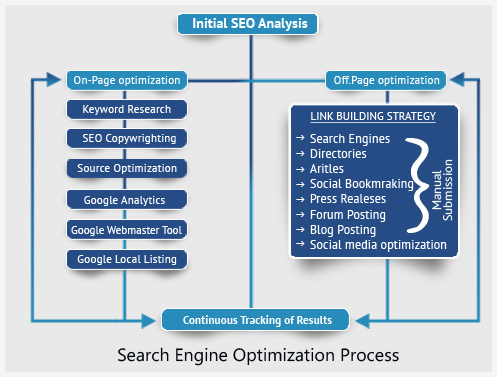
 In fact, a few months after the internal optimization, even without link purchasing, some semantic core requests may get to the top. These will probably be low-range and mid-range queries. However, despite all the evidence of this fact, very few site owners firstly conduct internal optimization in preference to purchasing links. Therefore, at this point, we recommend you to visit LinksManagement for the help of professional’s, who will assume all the link management optimization details.
In fact, a few months after the internal optimization, even without link purchasing, some semantic core requests may get to the top. These will probably be low-range and mid-range queries. However, despite all the evidence of this fact, very few site owners firstly conduct internal optimization in preference to purchasing links. Therefore, at this point, we recommend you to visit LinksManagement for the help of professional’s, who will assume all the link management optimization details.
or
free
SEO Cost Calculator Tool
Enter URL & See What We Can Do Submit the form to get a detailed report, based on the comprehensive seo analysis.
Sign Up